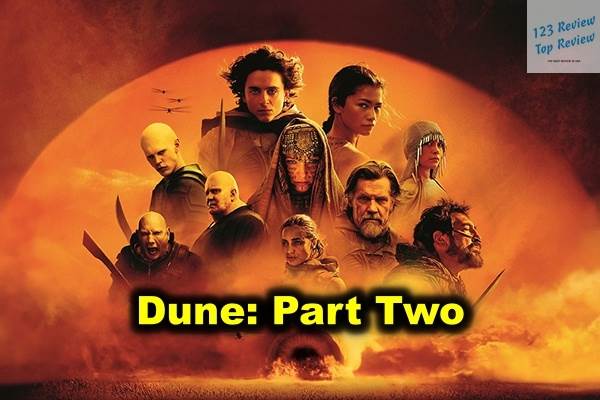Directed by Denis Villeneuve, this highly anticipated sequel promises to explore the intricate political machinations, intense battles, and profound mysticism that define Frank Herbert’s legendary sci-fi universe. With stunning visuals, a compelling storyline, and an all-star cast, “Dune: Part Two” aims to captivate audiences and solidify the series as a cinematic masterpiece. Discover what awaits in the deserts of Arrakis as the fight for control over the precious spice, melange, reaches new heights.
Plot Overview
Paul Atreides and the Fremen Alliance
“Dune: Part Two” continues the epic saga of Paul Atreides, the young noble who finds himself at the center of a battle for the fate of the universe. Following the dramatic events of the first film, Paul, now deeply entrenched in the desert world of Arrakis, forges a powerful alliance with the Fremen, the indigenous desert dwellers who have long resisted the tyranny of House Harkonnen. This alliance is more than strategic; it is a merging of cultures and destinies, with Paul embracing his role as the prophesied leader who will bring peace and balance to Arrakis. The film delves into the complexities of this relationship, highlighting the mutual respect and shared goals that drive their collaboration.

Conflict with House Harkonnen
The conflict with House Harkonnen reaches new heights in “Dune: Part Two.” The Harkonnens, led by the malevolent Baron Vladimir Harkonnen, are determined to reclaim their dominion over Arrakis and its precious spice, melange. This struggle is depicted with intense, visceral scenes of warfare and strategy, as Paul and the Fremen launch daring raids against the Harkonnen forces. The film doesn’t shy away from the brutal realities of this conflict, portraying the physical and psychological toll it takes on all involved. The stakes are higher than ever, with the control of the spice-and, by extension, the future of the entire universe-hanging in the balance.
Themes of Revenge and Leadership
Revenge and leadership are central themes in “Dune: Part Two.” Paul’s quest for vengeance against those who betrayed and destroyed his family is a driving force in his journey. This theme is explored with nuance, showing how revenge can be both a source of strength and a potential pitfall. Paul’s leadership is also put to the test, as he navigates the responsibilities and moral dilemmas that come with his role. The film explores the burdens of leadership, the sacrifices it demands, and the vision required to inspire and unify disparate groups.
Special Features and Extras
Behind-the-Scenes Insights
The behind-the-scenes insights provided with “Dune: Part Two” offer a fascinating look into the filmmaking process. Viewers are treated to exclusive interviews with the cast and crew, who share their experiences and challenges while bringing this epic story to life. These insights reveal the dedication and creativity involved in adapting such a complex and beloved work. From the intricacies of set design to the development of the film’s unique visual style, these features provide a deeper appreciation of the monumental effort behind the scenes.
Digital and Blu-ray Special Features
The digital and Blu-ray editions of “Dune: Part Two” are rich with special features that enhance the viewing experience. These editions include deleted scenes that offer additional context and character development, providing a more comprehensive understanding of the story. Director’s commentary sheds light on the creative decisions and thematic explorations of the film, offering fans a chance to hear from the visionaries behind the project. Featurettes delve into various aspects of production, from costume design to visual effects, making these editions a treasure trove for fans and cinephiles alike.
Availability of Streaming Options
“Dune: Part Two” will be widely available on multiple streaming platforms, ensuring that viewers have numerous options to enjoy the film. Whether through subscription services, rental, or purchase, the film’s accessibility allows fans to experience the continuation of Paul Atreides’ journey from the comfort of their homes. This availability caters to the diverse viewing preferences of the modern audience, making it easy for everyone to join in the epic adventure.
Character Development
Paul Atreides’ Journey
Paul Atreides’ journey in “Dune: Part Two” is one of profound transformation. From a displaced heir seeking refuge in the desert, Paul evolves into a formidable leader who embraces his destiny as the Kwisatz Haderach, the prophesied savior. The film explores his inner turmoil and growth, showing how he grapples with the immense responsibilities thrust upon him. Paul’s development is marked by his increasing understanding of the Fremen culture, his strategic acumen in battle, and his deepening spiritual insights. This journey is both personal and epic, reflecting the broader themes of destiny, power, and sacrifice.
Chani and the Fremen’s Role
Chani, portrayed by Zendaya, emerges as a pivotal character in “Dune: Part Two.” Her relationship with Paul is central to the narrative, providing both emotional depth and strategic partnership. Chani’s role goes beyond that of a love interest; she is a fierce warrior and a leader among the Fremen, whose knowledge and skills are crucial to their resistance efforts. The film delves into her backstory, her motivations, and her influence on Paul. The Fremen, as a collective, are depicted with rich detail, showcasing their resilience, spirituality, and unwavering commitment to their land and people.
Feyd-Rautha as the Antagonist
Feyd-Rautha Harkonnen, played by Austin Butler, steps into the spotlight as a formidable antagonist in “Dune: Part Two.” Feyd-Rautha is not just a physical threat; he embodies the cunning and ruthless ambition of House Harkonnen. The film delves into his character, exploring his motivations, his relationship with Baron Harkonnen, and his strategic mind. Feyd-Rautha’s presence adds a new layer of tension and conflict, challenging Paul in ways that go beyond mere physical confrontation. His character development is intricate, making him a compelling and multidimensional villain.
Cinematic Techniques
Visual Effects and Production Design
The visual effects and production design of “Dune: Part Two” are nothing short of spectacular. The film’s depiction of Arrakis is both majestic and immersive, capturing the vast deserts, towering sandworms, and intricate Fremen sietches with stunning realism. The use of practical effects, combined with cutting-edge CGI, creates a visually cohesive and believable world. The attention to detail in the sets, costumes, and props reflects the rich lore and complexity of the Dune universe. Each frame is meticulously crafted to transport viewers into this otherworldly setting, enhancing the epic scope of the story.
Soundtrack and Musical Composition
The soundtrack of “Dune: Part Two,” composed by Hans Zimmer, plays a crucial role in conveying the film’s emotional and thematic depth. Zimmer’s score blends traditional orchestration with innovative soundscapes, creating a unique auditory experience that complements the film’s visual grandeur. The music captures the mysticism, tension, and grandeur of Arrakis, enhancing the narrative’s impact. Key themes and motifs are woven throughout the score, reflecting the characters’ journeys and the overarching story. The soundtrack not only supports the film but also stands alone as a powerful and evocative work of art.
Filming Locations and Challenges
Filming “Dune: Part Two” involved a global effort, with locations spanning several countries to capture the diverse landscapes of Arrakis. The production faced numerous challenges, from harsh desert environments to logistical complexities. These challenges, however, contributed to the film’s authenticity and visual splendor. The filmmakers employed innovative techniques to overcome obstacles, including the use of advanced camera rigs and on-location practical effects. The dedication and resourcefulness of the cast and crew are evident in the final product, which boasts breathtaking visuals and an immersive atmosphere.
Cultural and Societal Themes
The Significance of Water on Arrakis
Water is a central theme in “Dune: Part Two,” symbolizing life, power, and survival on the arid planet of Arrakis. The film explores the cultural and practical significance of water among the Fremen, who have developed sophisticated methods of conserving and utilizing this precious resource. This theme is intricately woven into the narrative, highlighting the stark contrast between the opulent lifestyles of the ruling classes and the harsh realities faced by the desert dwellers. The significance of water also underscores broader environmental and ecological themes, making it a poignant element of the story.
Fremen Culture and Beliefs
The Fremen culture and beliefs are richly depicted in “Dune: Part Two,” providing a deep and immersive look into their way of life. The film explores their spirituality, rituals, and social structures, emphasizing their connection to the desert and their fierce independence. The Fremen’s reverence for the sandworms, their complex oral traditions, and their communal living arrangements are all portrayed with great detail and respect. This cultural depth adds layers to the story, showing how the Fremen’s beliefs and values influence their actions and interactions with Paul and other outsiders.
Political Intrigue in the Dune Universe
Political intrigue is at the heart of “Dune: Part Two,” with various factions maneuvering for power and control over Arrakis. The film delves into the complex web of alliances, betrayals, and strategic moves that define the Dune universe. Characters such as Duke Leto Atreides, Lady Jessica, and Baron Harkonnen engage in a high-stakes game of politics, where every decision has far-reaching consequences. This intrigue is depicted with sophistication, showing the interplay of personal ambitions, familial loyalties, and broader political agendas. The political landscape of Dune is a microcosm of larger themes of power, corruption, and resistance.
Fan Reception and Reviews
Critical Acclaim and Audience Feedback
“Dune: Part Two” has received widespread critical acclaim for its ambitious storytelling, visual splendor, and character development. Critics have praised the film’s fidelity to the source material, its innovative cinematic techniques, and its compelling performances. Audience feedback has been overwhelmingly positive, with fans lauding the film’s immersive experience and emotional depth. The film’s success is reflected in its box office performance and its popularity on streaming platforms, cementing its status as a landmark achievement in science fiction cinema.
Comparison to Dune (2021)
Comparisons to “Dune” (2021) are inevitable, and “Part Two” builds upon the foundation laid by its predecessor. While the first film introduced audiences to the vast and complex world of Dune, the sequel deepens the narrative, expands the universe, and elevates the stakes. “Dune: Part Two” benefits from the character development and plot setup established in the first film, allowing for a more intense and dynamic story. Fans and critics alike have noted the seamless continuation of the saga, with “Part Two” amplifying the themes, conflicts, and visual grandeur of the original.
Anticipated Impact on Future Adaptations
The success of “Dune: Part Two” is poised to have a significant impact on future adaptations of the Dune series. The film’s reception and box office performance have demonstrated the enduring appeal of Frank Herbert’s epic, paving the way for potential sequels and spin-offs. The attention to detail, respect for the source material, and innovative cinematic techniques set a high standard for future projects. The anticipation for subsequent films in the series is palpable, with fans eager to see how the story will unfold and expand in the years to come.
In conclusion, “Dune: Part Two” is a monumental achievement in science fiction filmmaking, offering a richly detailed, visually stunning, and emotionally resonant continuation of the Dune saga. Its exploration of complex themes, character development, and cinematic innovation makes it a standout film that will be celebrated for years to come.





